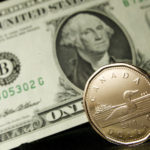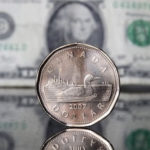 Gold futures fell toward negative territory in European trading on Wednesday but remained firmly above the $1 400 mark as President Barack Obama won opposition lawmakers support ahead of the upcoming vote in Congress on September 9, which bolstered concern over an imminent military intervention in Syria. Earlier gains were however offset by growing speculation that the Federal Reserve might pare its monetary easing program in September following the recent upbeat U.S. economic data.
Gold futures fell toward negative territory in European trading on Wednesday but remained firmly above the $1 400 mark as President Barack Obama won opposition lawmakers support ahead of the upcoming vote in Congress on September 9, which bolstered concern over an imminent military intervention in Syria. Earlier gains were however offset by growing speculation that the Federal Reserve might pare its monetary easing program in September following the recent upbeat U.S. economic data.
On the Comex division of the New York Mercantile Exchange, gold futures for delivery in December fell by 0.19% to $1 409.30 per troy ounce at 7:41 GMT. Prices ranged between days high of $1 415.00 an ounce that was touched during Asian trading and days low of $1 405.80. The precious metal surged 1.2% on Tuesday, the biggest advance in a week, but trimmed its weekly advance to 1% following Wednesdays slight retreat.
The precious metal received a boost on Tuesday and Wednesday as renewed concern over an escalation of the Syrian conflict spurred safe haven demand. Markets were rattled as unannounced ballistic “objects” were reported launched from the center of the Mediterranean with an eastward direction. The missiles were picked up by Russia and first reported by a Moscow media. Market players initially sought safe haven security in gold and currencies, as well as made long bets on oil. Tension however eased as the Israeli Defence Ministry announced that it, along with a U.S. team, carried out a test-launch of a Sparrow missile. It was used as a practice for Israel’s U.S.-backed ballistic shield Arrow as it simulates Iran’s and Syria’s long-range missiles.
Later on Tuesday, gold was further pushed up as President Barack Obama won support by House Speaker John Boehner and Majority Leader Eric Cantor, which would help him build a case to lawmakers who have questioned his decision to initiate an attack against the Syrian regime led by President Bashar al-Assad for the alleged use of chemical weaponry against civilians near Damascus on August 21.
Lv Jie, an analyst at Cinda Futures Co., said for Bloomberg: “Tension around Syria will be the near-term driver of gold prices. Recent U.S. economic data reflects a recovery, which should increase expectations for tapering of QE.”
The dollar index, which measures the greenbacks performance against six major peers, remained flat on Wednesday at 82.38 at 7:48 GMT. The September contract held in a narrow range between days high and low of 82.47 and 82.36. Futures rose 0.1% on Tuesday, extending current weeks advance to 0.3% so far this week after adding 0.9% in the preceding two five-day periods. Dollar-denominated commodities tend to trade inversely to the dollar as strengthening of the greenback makes them more expensive for foreign currency holders and limits their appeal as an alternative investment.
Gold gains remained in check however amid growing expectations that the Federal Reserve might begin decelerating its Quantitative Easing program following the Federal Open Market Committees next meeting due on September 17-18. The precious metal has fallen 16% this year and is headed for its first annual decline in 13 years as investors expect tapering of the bond purchases to take place in the second half of the year.
Speculations over tapering grew larger after the Institute for Supply Management reported on Tuesday that U.S. factory activity grew at the fastest pace in 26 months. The institute’s ISM Manufacturing index surged to 55.7 in August from 55.4 in July, confounding analysts’ expectations for a drop to 54.0. This was the highest reading since June 2011.
Last Thursday, the Commerce Department reported that the U.S. economy grew more in the second quarter than previously estimated in July. The U.S. Preliminary (Revised) GDP marked a growth of 2.5% from a year earlier, compared to the flash reading of 1.7% published on July 31 and surpassing analysts’ expectations for a correction to a 2.2% advance.
Meanwhile, the Department of Labor reported that fewer people than anticipated filed for initial jobless payments last week. In the week ended August 24, U.S. initial jobless claims fell to 331 000, beating forecasts for a drop to 332 000 from the preceding period’s upward revised reading of 337 000 claims.
Market players will be keeping a close watch on this week’s upcoming U.S. data to gauge the American economy’s strength and build up expectations for a QE tapering timetable. On Wednesday, the U.S. trade deficit is projected to have widened to $38.6 billion in July from $32.224 billion in June. Thursday’s ADP Employment Change will provide preliminary information for the U.S. labor market. Also on Thursday, Q2 Non-Farm Productivity and Unit Labor Costs should have increased, while the ISM Non-Manufacturing Composite and Factory Orders are expected to have declined. On Friday, the highly anticipated U.S. Non-Farm Payrolls should have surged in August, while the Unemployment Rate likely remained unchanged at 7.4%. Average Hourly Earnings and Average Weekly Hours are anticipated to have increased as well.





